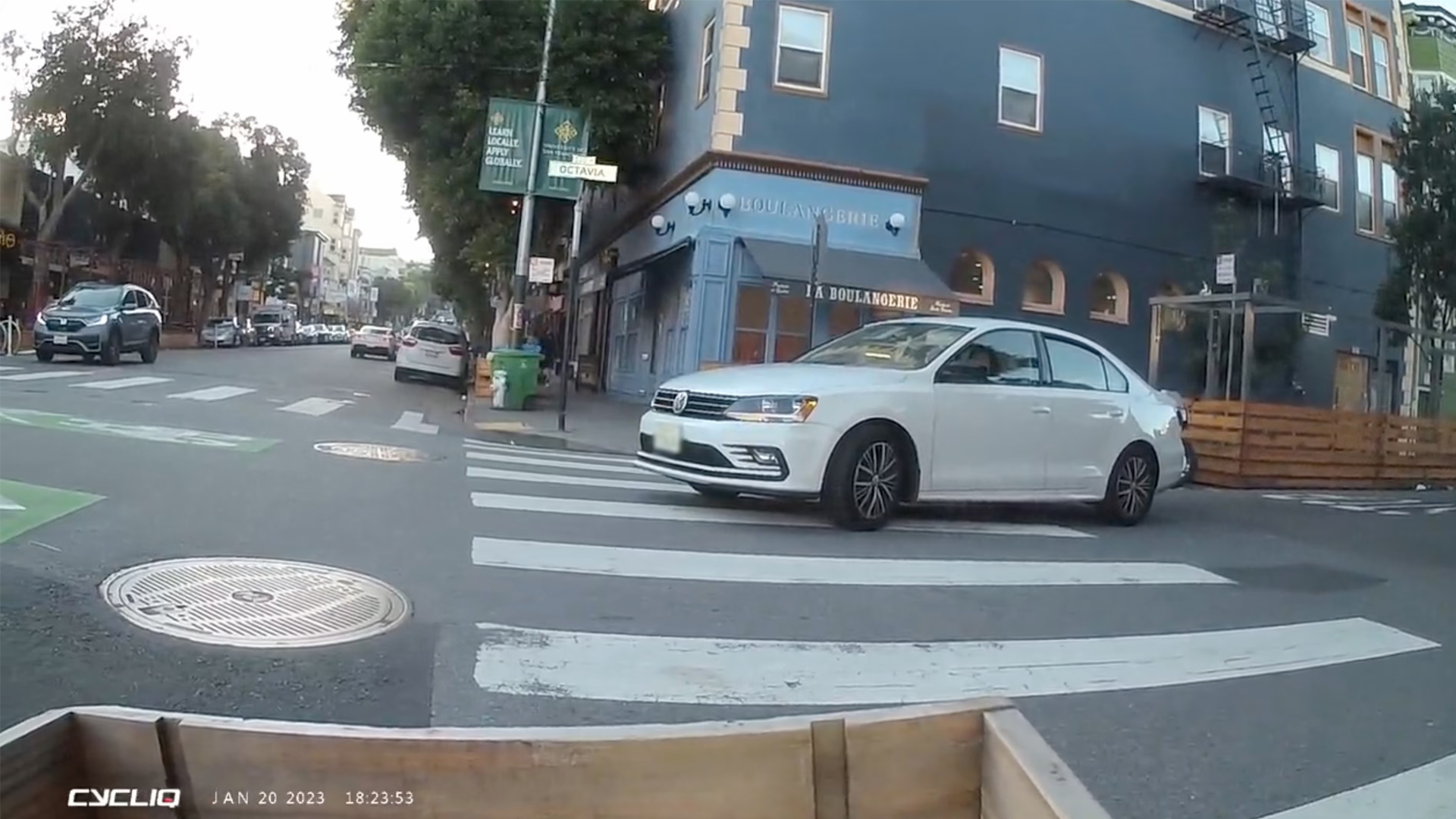A driver yelled at a bicyclist that he “should die” after he blocked her car’s access to a San Francisco street that limits vehicle traffic on weekends.
Community advocate Tim Courtney caught the incident on video when he was cycling through Hayes Valley on Friday, Jan. 20, at around 4:20 p.m.
The visibly enraged motorist had attempted to drive down the 400 block of Hayes Street from Octavia Street into a “Shared Spaces” road—a street that blocks vehicle traffic and parking except for those who need access to their homes from 4 p.m. to 10 p.m. Friday and on Saturday and Sunday, a local merchant’s association said. Shared Spaces are similar to Slow Streets.
“I stopped in the gap between cones to keep the space safe for people and waited for her to pass,” Courtney said. “When she yelled, ‘You’re the f—ing white people that should die’ while behind the wheel and then sped off recklessly, I couldn’t let it slide. That demands accountability.”
The 40-year-old Oakland resident believes the entire situation could have been prevented if the city’s transit agency installed heavy-duty barriers “instead of flimsy cones” on the pedestrianized street. He has since reported the driver to the San Francisco Police Department. Police were contacted for comment.
“We need to make it impossible to drive fast and recklessly,” Courtney said. “The way to do that is with physical infrastructure and safe-street design, including concrete and separated, protected bike lanes.”
He points out that similar methods of protecting riders have been implemented here in the U.S. and abroad already.
“These deaths and injuries are unacceptable and preventable, and San Francisco is committed to stopping further loss of life,” a spokesperson for the San Francisco Municipal Transportation Agency said. “Even as it is a difficult path, we know a lot about what the path looks like to achieve Vision Zero. We need streets that move people, not cars. And we need cars to slow down to save lives.”
The SFMTA spokesperson added that over the past five years, the agency has repurposed dozens of travel lanes for people walking, biking and taking transit, built nearly 50 miles of protected bike lanes, slowed vehicle turns at hundreds of intersections, and added over 600 new speed bumps to San Francisco streets.
Deadliest Year on Record
Road safety has been an ongoing issue in San Francisco, with 2022 being the deadliest year on record according to Vision Zero SF data, which tracks traffic-related fatalities.
Last year, 37 people were killed on San Francisco streets, according to city data. Formed in 2014, Vision Zero is the city’s initiative to end traffic-related deaths.
Vision Zero initiatives include lowering the speed limit inside the Tenderloin to 20 mph and “quick build” projects adding protected bike lanes and speed bumps to certain roads.
Former SF Bicycle Coalition board member Jane Natoli said experiences like Courtney’s are not uncommon in the city.
“Everyone biking through San Francisco has a story like that,” Natoli said.
Natoli said that part of the reason there is tension between bicyclists and drivers who share the road, especially in cities, is that bicyclists face a disproportionate risk of injury or death.
“If you make a mistake while riding a bike, at worst, you’ll typically only hurt yourself. If you make a mistake while driving, you can easily kill someone,” Natoli said.
Natoli says she has had three crashes with cars while biking in San Francisco, breaking her left and right index fingers in two of them.
“We have the right to walk, bike and move with dignity, and without threat of being injured or killed by a motorist,” Courtney said.
